Trade Trees are attractive because they show how things develop over time. There’s a saying in hockey that if “Wayne Gretzky can be traded, anyone can,” and it’s true. When the greatest player to ever play the game was dealt, everything changed; Gretzky’s trade tree ended a few years ago, but the ramifications of this deal have shaken the league to its core. This is the Wayne Gretzky Trade Tree.
Gretzky’s Youth Hockey
On Jan. 26, 1961, Gretzky was born in Brantford, Ontario. Growing up, he was never the biggest player on the ice, but he loved the game, and his skill set was superior to most of the players around him; he was playing in under-18 leagues as a 14 or 15-year-old because he dominated everyone else on the ice. In 1975, he joined the Metropolitan Junior B Hockey League as a 15-year-old, scoring 27 goals and 33 assists in 28 games.
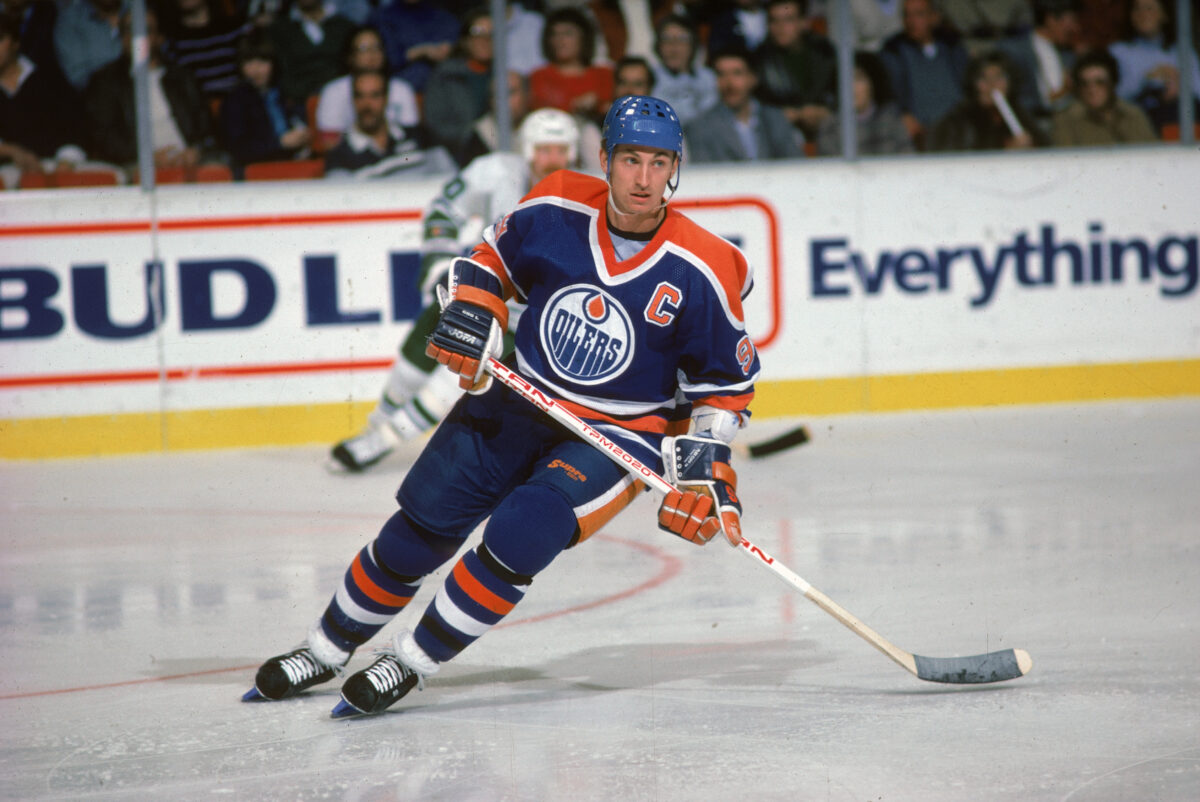
When he finally got to play in the Ontario Hockey Association with the Peterborough Petes, he had just three assists in three games. It was such a poor display that The Great One decided to take it out on everyone. In 63 games, he had 70 goals and 112 assists for 182 points, seven points below a three-point-per-game pace.
Gretzky’s WHA tenure
Heading into the 1978-79 season, a 17-year-old Gretzky wanted to play professionally but was too young for the NHL. Today, this would leave him with the choice of Europe or returning to juniors, but in the late 1970s, he joined the collapsing World Hockey Association or the WHA – the NHL’s rival league. You may be jumping to conclusions if you’ve ever read about the 1979 WHA-NHL merger. The Edmonton Oilers were a WHA team, but Gretzky didn’t jump straight to the good times in Oil Country.
Gretzky joined the Indianapolis Racers, who hoped that the sparkling youngster would help them stabilize their fanbase and grow the sport. Unfortunately, that was not the case, as no one seemed to care about the promising youngster who put up three goals and three assists in eight games, so the Racers ownership folded the franchise following years of reckless spending with no real growth of the fanbase. Social Media didn’t exist at the time, so it was far more difficult to get the news to casual fans in the area about how good this young man was. This was the first time Gretzky managed less than a point per game; the next time that happened was the year he retired.
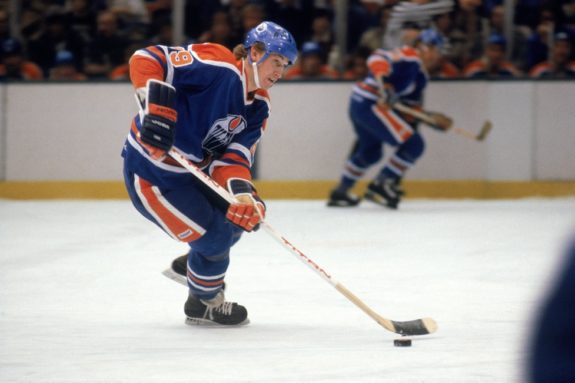
A famous folktale says that the greatest player ever was won in a game of backgammon. As the story goes, Racers owner Nelson Skalbania was a Backgammon player. Winnipeg Jets owner at the time, Michael Gobuty, was not a backgammon player, but his wife was. Skalbania asked Gobuty for a game for the player who would go on to be the most dominant we’ve ever seen. However, Gobuty claims then-Winnipeg Jets general manager Rudy Pilous went to see Gretzky’s last game with the Racers and determined he was too skinny and small. Whether you believe it is worse to have straight up said no to the Great One or to have lost him in a board game, Gretzky never became a Jet.
It was Edmonton Oilers owner Peter Pocklington that landed the young phenom.
Gretzky’s Oilers’ Dominance
In his one season with the Oilers in the WHA, Gretzky tallied 43 goals and 104 points in 72 games as a 17-year-old.
After the 1979 season, the WHA folded and had its four biggest teams join the NHL, the Hartford Whalers (now the Carolina Hurricanes), the Quebec Nordiques (now the Colorado Avalanche), the Jets (now the Arizona Coyotes), and the Oilers. There was a quick dispersal draft of the other two WHA franchises that folded in Cincinnati and Birmingham for the clubs going into the NHL, allowing the players of the teams to find new homes. Some players who had NHL rights with other teams, though, would go back to those organizations in the 1979 “Reclamation” draft. It gutted a lot of the star talent these rosters had. With teams only allowed to protect 1 goalie and 3 skaters during this, Edmonton wisely protected Gretzky, voiding his NHL rights. This is important because it means Gretzky was never drafted.
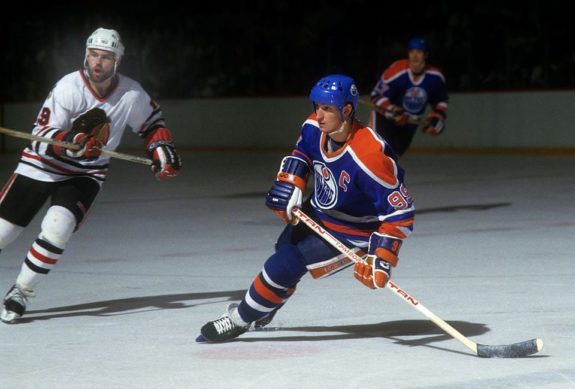
For the 1979-80 season, Gretzky had the casual 51 goals and 86 assists for 137 points. He followed that up with 55 goals and 109 assists for 164 points. That wasn’t good enough, so he had a 92-goal season with 120 assists for 212 points; that 92-goal record stands today. However, he broke his own 212-point record in 1985-86 with 215 (52 goals and 163 assists). An NHL player has only scored 200+ points in a season four times, in 1981-82, 1983-84, 1984-85, and 1985-86, all by Gretzky.
Related: Wayne Gretzky Stats: Top 10 Most Unbreakable Records
As for Gretzky’s trophy cabinet, he won the Hart Trophy as league MVP every year he was an Oiler except the season he was traded. He won the Lady Byng for gentlemanly conduct as a rookie, and he won the Lester B. Pearson, which is today known as the Ted Lindsay Trophy awarded to the Most Valuable Player as voted by the NHL Players Association. He won seven Art Ross Trophies as the league’s top point scorer. He also won four Stanley Cups and two Conn Smythe Trophies as playoff MVP. At the end of his career, he had nine Hart Trophies, five Ted Lindsays, two Conn Smythes, 10 Art Rosses, five Lady Byngs, and four Stanley Cup rings.
Trade Rumors Start
Fresh off winning the 1988 Stanley Cup and the Conn Smythe, trade rumors started to rumble. A man who played in 696 games as an Oiler and had 583 goals and 1086 assists for 1669 points was on the trade block. The 1980s were a weird time, but it was needed as Pocklington was looking to try and fund projects away from the NHL at the time. With the rising player salaries, and the Oilers full of stars, the team had started to lose money. Organizations began to call left and right. The Vancouver Canucks were interested in Gretzky.
While house-sitting for his friend, actor Alan Thicke, news of an agreement between the Oilers and Kings started to trickle out. Despite the efforts of the Canadian Government to block any deal that would move Gretzly below the border, the wheels had been set in motion and had gone too far to stop. Gretzky was going to become a member of the Kings.
The Trade
Famously known as “The Trade,” Gretzky was packaged with Marty McSorley and Mike Krushelnyski in exchange for Jimmy Carson, Martin Gelinas, a 1989 1st-round pick, a 1991 1st-round pick, a 1993 1st-round pick, and $15 million cash, and this is not even the worst Gretzky trade.
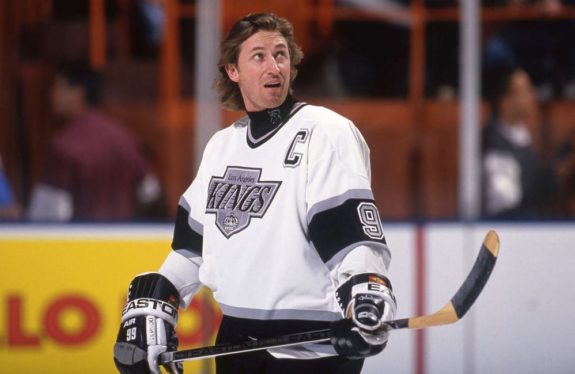
Pocklington reported getting death threats for this trade but maintains the trade benefited everyone involved. It shook the NHL. To put it in perspective, if Gretzky had refused to go anywhere and retired, he’d still be one of the best; his 1669 points as an Oiler would rank ninth today, above Joe Sakic. He was the greatest player ever to be traded.
Oilers Side
Start with the cash. It helped keep the rest of the Oilers team together that won the 1990 Stanley Cup in Gretzky’s absence. Pocklington’s financial issues put the team’s stability in danger towards the end of his tenure. There were outside factors to this, but these issues were again cited down the line when the Oilers dynasty pulled the plug on the
Two picks have incredibly short branches, so let’s start with them. That 1993 1st-round pick was used on Nick Stajduhar. Stajduhar played two games with the Oilers before bouncing around the minors.
The 1991 1st-round pick also only played two games with the Oilers. However, that was the management’s fault. Martin Rucinsky was a good pick, and if you don’t remember him as an Oiler, that should tell you everything. He was shipped out to the Nordiques for Ron Tugnutt and Brad Zavisha. Tugnutt played 29 games as an Oiler, scoring ten goals and 13 assists before he was selected by Anaheim in the expansion draft. Zavisha played two games with the Oilers before being flipped alongside a 1995 6th-round pick used on Jamie Sokolsky in exchange for Ryan McGill. McGill played eight games as an Oiler and wasn’t traded.
1989 1st Branch
The Oilers never used that 1989 1st-round pick. They traded it to the New Jersey Devils, who used it on Jason Miller in exchange for Corey Foster. He never played for the Oilers. This is a little forced because he dealt with Dave Brown and Jari Kurri, Kurri being the central piece, but this is a branch, so let’s follow it. They were shipped to the Philadelphia Flyers for Craig Fisher, Craig Berube, and Scott Mellanby.
Mellanby played 149 games as an Oiler and tallied 38 goals and 44 assists. He was selected in the expansion draft by the Florida Panthers. Fisher never played for the Oilers but was sent to the Jets for cash considerations, which leaves Craig Berube, who is now the head coach of the St Louis Blues. Berube never played in Edmonton but was packaged with two other players from the 1980s dynasty – Glenn Anderson and Grant Fuhr – and sent to Toronto Maple Leafs for Vincent Damphousse, Peter Ing, Luke Richardson, Scott Thornton, cash considerations, and future considerations.
As far as I can tell, those future considerations became nothing. Richardson spent 436 games as an Oiler, scoring 13 goals and 65 assists. He wasn’t there for the offense and managed 630 penalty minutes; he’s now the head coach of the Chicago Blackhawks. That’s two current NHL head coaches in this trade tree, and we’re not done yet. He wasn’t traded, so let’s move on to Peter Ing. He had three goals and four assists in 12 games with Edmonton before he was dealt to Detroit Red Wings for a 7th-round pick that became Chris Wickenheiser. He never played in the NHL.
Scott Thornton stayed in Edmonton for a while. During his 209 games as an Oiler, he scored 23 goals and 30 assists, but his 385 penalty minutes tell you what his role was. He was never a Lady Byng candidate. He was traded to the Montreal Canadiens for Andrei Kovalenko. Kovalenko played 176 games as an Oiler, scoring 51 goals and 58 assists. He was traded to the Flyers in exchange for Alexandre Daigle – Daigle never played for the Oilers because he was flipped to the Tampa Bay Lightning on the same day as Alex Selivanov. Selivanov played 96 games for the club, with 35 goals and 26 assists. He wasn’t traded, so this branch ends here.
Damphousse was an outstanding player in his own right, but most of his career was not spent in Edmonton. Playing only 80 games with the club, scoring 38 goals and 51 assists, he was packaged with a 1993 4th-round pick (that became Adam Wiesel) and sent to the Canadiens in exchange for Shayne Corson, Brent Gilchrist, and Vladimir Vujtek. Corson played 192 games for Edmonton, scoring 53 goals and 137 points. His branch ends there as well.
Gilchrist played 60 games with the Oilers, scoring ten goals and ten assists. He was dealt to Minnesota, that’s the North Stars, for Todd Elik. Elik played 18 games with the organization, scoring once and adding nine assists. He was not traded. Vujtek played 70 games with the Oilers, netting five goals and 30 points. He was dealt to the Lightning alongside a 3rd-round pick (used on Dimitri Afanasenko) in exchange for a 1998 3rd-round pick (used on Alex Henry and Brantt Myhres). Henry played three games with the Oilers but was never traded. Myhres never played with the Oilers before he was dealt to the Flyers in exchange for Jason Bowen. Bowen played four games with the Oilers, but that was it for him in the NHL.
Jimmy Carson’s Branch
Jimmy Carson was the 2nd overall pick in 1986 He had a very good career, including 50 goals and 103 points in 84 games with the Oilers. He was dealt alongside Kevin McClelland and a 1991 5th-round pick (used on Brad Layzell) to the Red Wings in exchange for Adam Graves, Petr Klima, Joe Murphy, and Jeff Sharples. Graves played 139 games with the Oilers, scoring 16 goals and 30 assists, and 250 penalty minutes. He wasn’t traded, so that’s it.
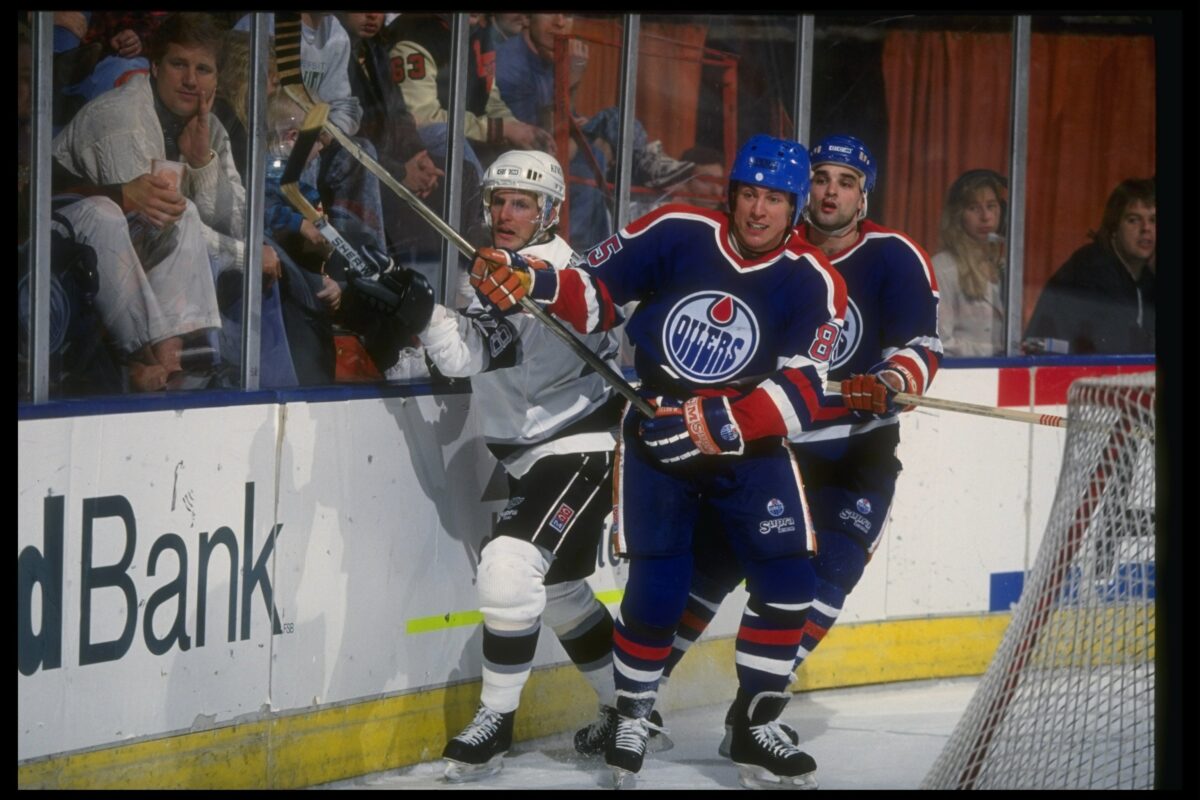
Petr Klima was an Oiler for half a decade, scoring 119 goals and 209 points in 274 NHL games. While this is far from an ideal return for Gretzky, it’s not insignificant for Edmonton. Klima was dealt to the Lightning in 1993 for a 1994 3rd-round pick that became Brad Symes. He was never traded. Jeff Sharples never played for the Oilers and was dealt to the Devils for Reijo Ruotsalainen. Ruotsalainen played 26 games as an Oiler, netting six goals and 21 points. His time in Edmonton marked the end of his NHL career, though he was never traded.
Joe Murphy’s Branch
Murphy’s branch is complex. Murphy was an Oiler for 222 games, netting 69 goals and 169 points. Those are very nice totals, indeed. Murphy was traded to the Blackhawks for Dean McAmmond and Igor Kravchuk. We will put a pin in Kravchuk for now because he gets tied into the Martin Gelinas branch, so let’s follow the bouncing ball with McAmmond.
After 303 games as an Oiler, scoring 61 goals and 161 points, McAmmond was involved in a giant deal that sent him, Jonas Elofsson, and Boris Mironov to the Blackhawks for Daniel Cleary, Chad Kilger, Christian Laflamme, Ethan Moreau, and an Oilers option to swap 2nd-round picks in 1999, which they did.
Cleary played four seasons in Edmonton with 31 goals and 55 assists. He wasn’t traded, so there’s nothing else here. Kilger played 87 games, adding nine goals and five assists. He was dealt to the Canadiens for Sergei Zholtok. Zholtok played 37 games with Edmonton, with four goals and 20 points, but he was traded to Minnesota – Wild this time – for a 2002 7th-round pick that became Jean-Francois Dufort, who never made the NHL.
LaFlamme had six assists in his 61 games in Edmonton before he was packaged with Mathieu Descoteaux and sent to the Canadiens for Alain Nasreddine and Igor Ulanov. Nasreddine is a former Devils’ head coach. He never played for the Oilers and was never traded. Ulanov spent four years in Edmonton with 160 games, 11 goals, and 53 points. He was not traded either.
Related: Ethan Moreau – The Last Link to the Gretzky Trade
That 2nd-round pick the Oilers got from the Blackhawks was used on Alexei Semenov. Semenov played 103 games in Edmonton, with ten assists and 14 points. He was traded to the Panthers for a 2006 conditional 5th-rounder that became Bryan Pitton. Pitton never made the NHL, leaving just Ethan Moreau to talk about.
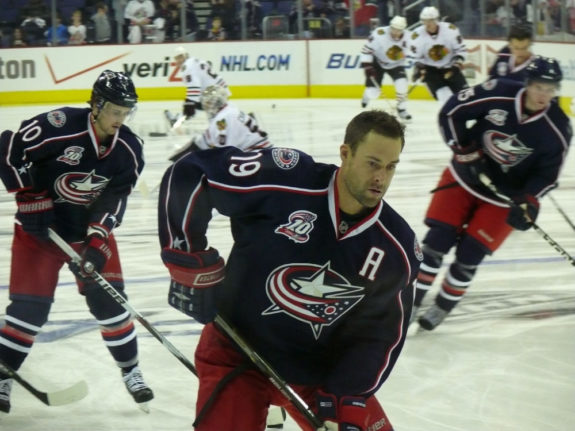
While trading away Gretzky came with a price, finding Ethan Moreau was brilliant. During his 11 seasons in Edmonton, he played 653 games, netting 112 goals and 212 points. He was team captain for many years, played in the 2006 Stanley Cup Finals (against the Carolina Hurricanes), and remained an Oiler until the end of the 2009-10 season. This trade tree started in 1988, and this part ends here – but we still have Kravchuk to tie the loose ends.
Martin Gelinas’ Branch
Gelinas was the 7th overall pick in the 1988 NHL entry draft, which is why the Oilers wanted him in any deal. He won the Stanley Cup in 1990 with Edmonton, but he only spent five seasons of his 19-year NHL career in Oil Country. In 258 games, he scored 60 goals and 60 assists. Gelinas was packaged with a 1993 6th-round pick that became Nicholas Checco and sent to the Nordiques for Scott Pearson. Pearson had 100 games as an Oiler, netting 42 points. He was traded to the Buffalo Sabres for Ken Sutton. In 44 games for the organization, Sutton added three goals and nine assists. He was packaged with another player when he was traded; that player was Kravchuk.
Related: Oilers’ All-Time Top Russian Defenseman
Kravchuk was not a Gretzky replacement, but it was not for lack of trying. In 160 games, he scored 27 goals and 61 assists in the heart of the dead puck era. It’s not awful. He and Sutton were sent to the Blues in exchange for Jeff Norton and Donald Dufresne. Dufresne played 64 games in Edmonton, adding one goal and seven assists. He was not traded.
Norton played 92 games with the Oilers with six goals and 33 points. He was sent to the Lightning for Drew Bannister and a 1997 6th-round pick that became Peter Sarno. Sarno played six games and scored a goal with the Oilers before he was traded to the Columbus Blue Jackets for Tyler Moss. He was never traded and never played with the Oilers.
Bannister played 35 games with Edmonton, scoring three assists, before being dealt to the Mighty Ducks of Anaheim in exchange for Bobby Dollas. Dollas had two goals and five assists in 30 games in Edmonton before he was dealt with Tony Hrkac to the Pittsburgh Penguins for Josef Beranek. Beranek played 208 games for Edmonton, scoring 42 goals and 60 assists. He was traded back to Pittsburgh for German Titov. Titov had four assists in seven games for the Oilers. He wasn’t traded, which ends this branch and trade tree here…for the Oilers.
Kings Side of the Trade Tree
You’re not alone if you need a reminder of what the Kings got in this deal. Los Angeles received Gretzky, McSorley, and Krushelnyski. The long branch here is McSorley’s, so we’ll get to him last. But before we talk about the individuals involved, this deal worked well in Los Angeles. Fans started to pack the arena to see the greatest player in the sport. Shirt sales aside, having the best player in the sport is one very good way to get eyes on the sport. The Kings beat the Oilers in the 1989 playoffs with Gretzky. They got to the Stanley Cup in 1993, beating the Toronto Maple Leafs in the Western Conference Final before being led like a lamb to the abattoir in that Stanley Cup Final against Montreal.
Gretzky’s Branch
While he was not the dominating force he had been in the early 1980s, Gretzky did not disappoint in LA. Starting in the City of Angels with 54 goals and 114 assists, he didn’t miss a beat. Over eight seasons in Los Angeles, he played 539 games, scoring 246 goals and 672 assists. Here’s a fun fact: Gretzky has the lowest number of games to collect 1000 points, beating himself. Going from 1001 to 2000 points was faster than his first 1000, and he already had that record. Those 1963 assists he collected in his career alone would lead the league in the points category. It took Connor McDavid 14 seasons, scoring at a 150+-point pace, to trouble Gretzky’s all-time NHL point record. Gretzky averaged 143 points a year.
The Blues came calling at the trade deadline in 1996. Remember when I mentioned that the Oilers Gretzky trade wasn’t the worst? Gretzky was dealt to St Louis for Craig Johnson, Patrice Tardif, Roman Vopat, a 1996 5th-round pick (used on Peter Hogan), and a 1997 1st-round pick (used on Matt Zultek). This takes the cake for awful Gretzky trades.
Johnson was not the reason for it, though. He spent 429 games in LA, scoring 62 goals and 79 assists. Tardif played 15 games as a King, scoring one goal and one assist. We’ll come back to Vopat. Zultek never made the NHL and wasn’t traded, and Hogan was the same.
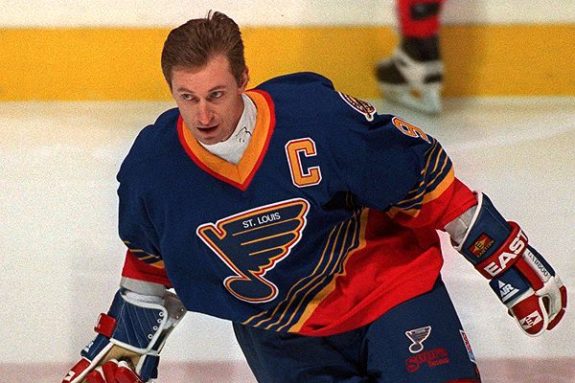
Vopat played 57 games in LA, scoring four goals and eight assists. He was the only piece from the Gretzky trade to eventually be moved. He was traded to the Avalanche alongside a 1999 6th-round pick (used on Martin Prusek) for Eric Lacroix. Lacroix played 144 games with the Kings with 25 goals and 24 assists. He was traded to the New York Rangers for Sean Pronger. Chris Pronger’s brother had 13 games as a King, with just one assist for his trouble. He left the Kings at the end of the 1999 season. Gretzky’s branch is underwhelming.
Mike Krushelnyski’s Branch
If you thought seven assets were bad, Krushelnyski’s branch has three. During his three seasons as a King, he scored 43 goals and 66 assists in 156 games. He was traded to the Maple Leafs for John McIntyre. McIntyre’s 178 games as a King saw him put up 15 goals and 29 assists, as well as 295 penalty minutes. He was sent to the Rangers for Mark Hardy and a 1993 5th-round pick used on Frederik Beaublen. Beaublen never made the NHL and was never dealt. As for Hardy, this was a homecoming of sorts. He had spent nine seasons with the Kings, but only played 27 games during this stint, scoring six points, all assists. He was never traded.
Marty McSorley’s Branch
Remember, McSorley’s branch is the longest on the LA Kings’ side. McSorley played 961 career NHL games with 108 goals and 251 assists. He didn’t care much for the fine arts of the game as much as he wanted to re-arrange faces. With 3381 penalty minutes in his career, he had a formidable pair of fists. He was traded to the Penguins for Shawn McEachern. McEachern played 49 games as a King, scoring eight goals and 13 assists before he was shipped back to Pittsburgh for McSorley. It was a little more complicated this time, with the Kings adding Tomas Sandstrom and acquiring Jim Paek alongside the two previously traded players.
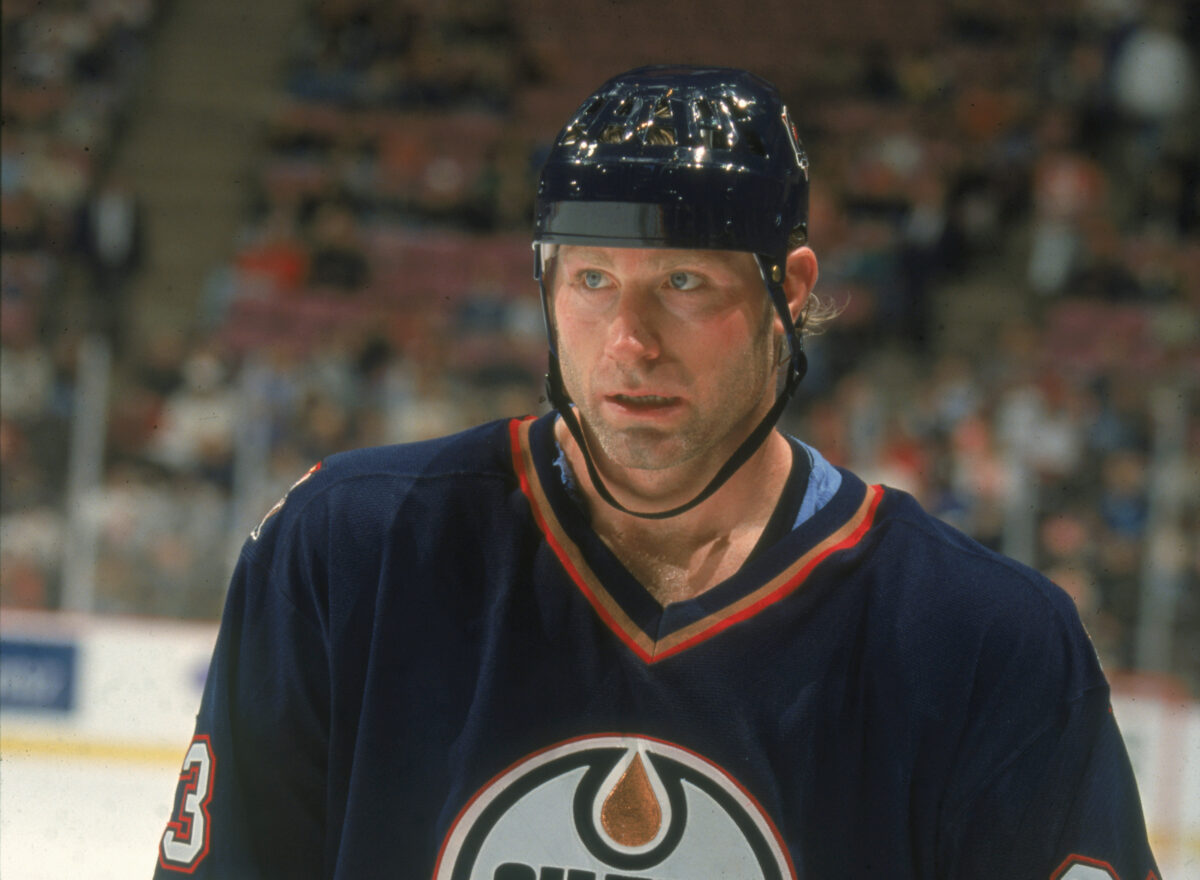
Paek played 18 games in LA, scoring a goal and an assist. He was dealt to the Ottawa Senators for a 1995 7th-round pick that became Benoit Larose, who never made the NHL.
Back to McSorley. I didn’t mention his totals as a King earlier, so let’s do that here. He played 472 games across eight seasons, scoring 71 goals and 234 points. That is not what McSorley did, though; his 1846 penalty minutes show you everything he did well. McSorley really embodies the saying, “I went to a fight, and a hockey game broke out”.
In 1996, the Kings tried to trade McSorley again, this time to the Rangers. He was packaged with Shane Churla and Kurri in exchange for Ray Ferraro, Nathan Lafayette, Ian Laperriere, Mattias Norstrom, and a 1997 4th-round pick that became Sean Blanchard. Blanchard never made the NHL. Ferraro spent four seasons as a King, playing 197 games and scoring 48 goals and 50 assists. Ferraro departed in free agency after four seasons in Los Angeles, playing 94 games with 10 goals and 12 assists.
Norstrom’s Branch
Mattias Norstrom is the sole reason this trade tree will go on forever. During his 11 seasons with the Kings, he played 780 games, scoring 14 goals and 128 assists as a defenseman. He was also captain of the Kings for six seasons. In Feb. 2007, he was packaged with Konstantin Pushkarev, a 2007 3rd-round pick (used on Sergei Korostin), and a 2007 4th-round pick (used on Maksim Mayorov) to the Dallas Stars for Johan Fransson (no, not that one), Jaroslav Modry, a 2007 2nd-round pick (used on Oscar Moller), a 2007 3rd-round pick used on Bryan Cameron, and a 2008 1st-round pick (used on Viktor Tikhonov).
Fransson was only traded once and never played in the NHL. He’s not the player from the Red Wings team that dominated the league in the early 2000s. Oscar Moller played 87 NHL games in his career, scoring 12 goals and 26 points. He was never traded. Bryan Cameron never made the NHL and was never dealt. Modry’s return to LA would be brief. He spent ten seasons in LA throughout his career but only played 80 games after this trade, scoring once and adding 13 assists. He was sent to the Flyers for a 3rd-round pick used on Geordie Wudrick, who never made the NHL.
That 1st-round pick is what keeps this trade tree going. The Kings never used that pick and instead were sent alongside another 1st-round pick that became Jake Gardiner at 17th overall and sent to the Anaheim Ducks for the 12th overall pick. The 1st-round pick the Kings acquired was used on Tyler Myers. But the Sabres drafted Myers, right? That pick was traded to Buffalo to move down to 13th overall and pick up a 2009 3rd-round pick. That 1st-round pick was used on Colten Teubert, with the 3rd-round pick becoming Ryan Howse.
The first-round pick here is a shorter branch, somewhat comically. Teubert was sent with a 2011 1st-round pick and a 2012 3rd-round pick to the Oilers for Dustin Penner. Trying to win the Stanley Cup in 2011 by adding a pick player at the deadline, it just didn’t work out this year. Those picks? The 3rd was used on Daniil Zharkov, but the 1st-round pick they sent to the Oilers for Penner was used on Oscar Klefbom.
Before I rub any more salt in that wound, the pick used to select Howse was traded to the Calgary Flames for a later pick in the third round and a fourth-round pick. That third-round pick we’ll come back to, but the fourth was used on Garrett Wilson by the Panthers after the Kings traded the 4th and a 5th that became Wade Megan to the Panthers for a 2010 3rd-round pick. Tampa Bay used this pick on Brock Beukeboom after it was packaged with Teddy Purcell and sent to the Bolts for Jeff Halpern. Halpern played in 16 games for the Kings, scoring two assists.
That 2009 3rd Round Pick
That 3rd-round pick? It was used on Nicolas Deslauriers. How many people knew the Kings drafted Deslauriers? He was traded to the Sabres with Hudson Fasching before he ever played for LA in exchange for Brayden McNabb, Jonathan Parker, a 2014 2nd-round pick, and a 2015 2nd-round pick. McNabb played 201 games as a King, scoring six goals and 36 assists before the Vegas Golden Knights took him in the expansion draft. Yes, the Gretzky Trade affected the 2017 Expansion Draft.
Parker never played in the NHL and was not traded after this, opting to step away from hockey in 2016. This leaves us with the two 2nd-round picks, both used by the Kings. Alex Lituniemi was the 2014 2nd-round pick, and he’s bounced around the minor leagues but never made the NHL. He wasn’t dealt, leaving us with the 2015 2nd.
That 2015 2nd-rounder was used on Erik Cernak. Cernak has played his entire career with the Lightning, so you know there’s a trade coming here. He was dealt at the 2017 Trade Deadline to the Bolts alongside Peter Budaj and a 2017 7th-round pick that became Wyatt Kalynuk for a 2017 5th-round pick used on Drake Rymsha, who had one game in the NHL, and goaltender Ben Bishop. Bishop played seven games in LA, putting up a .900 save percentage and a 2.49 goals-against average.
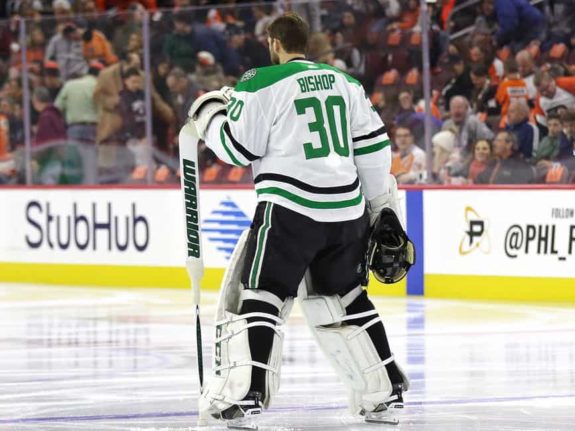
Bishop’s rights were traded to the Dallas Stars for a 2017 4th-round pick that became Markus Phillips, who never played in the NHL but was dealt to the Jets for Nelson Nogier. Nogier never played for the Kings, so the Gretzky Trade Tree ends here.
Wayne Gretzky’s Trade Tree Overall
Consider that this deal was made in 1988, and the final branch died in 2022. This deal shook the hockey world and affected an expansion draft almost 30 years later. More than just the precedent it set, it affected the hockey world in Los Angeles. It still affects how some Oiler fans feel about the franchise’s former owner. Several players in this trade tree are still young by NHL standards.
Many assume that Gretzky was traded for money for off-ice dealings and to supplement the Oilers’ inflated payroll. But it’s hard not to wonder where the NHL would be if this deal hadn’t happened. If Gretzky didn’t become a King, do the San Jose Sharks and the Anaheim Ducks still join the league? How different could the end of the Oilers dynasty have been if they had kept the Great One? These questions are probably best saved for a different time.
